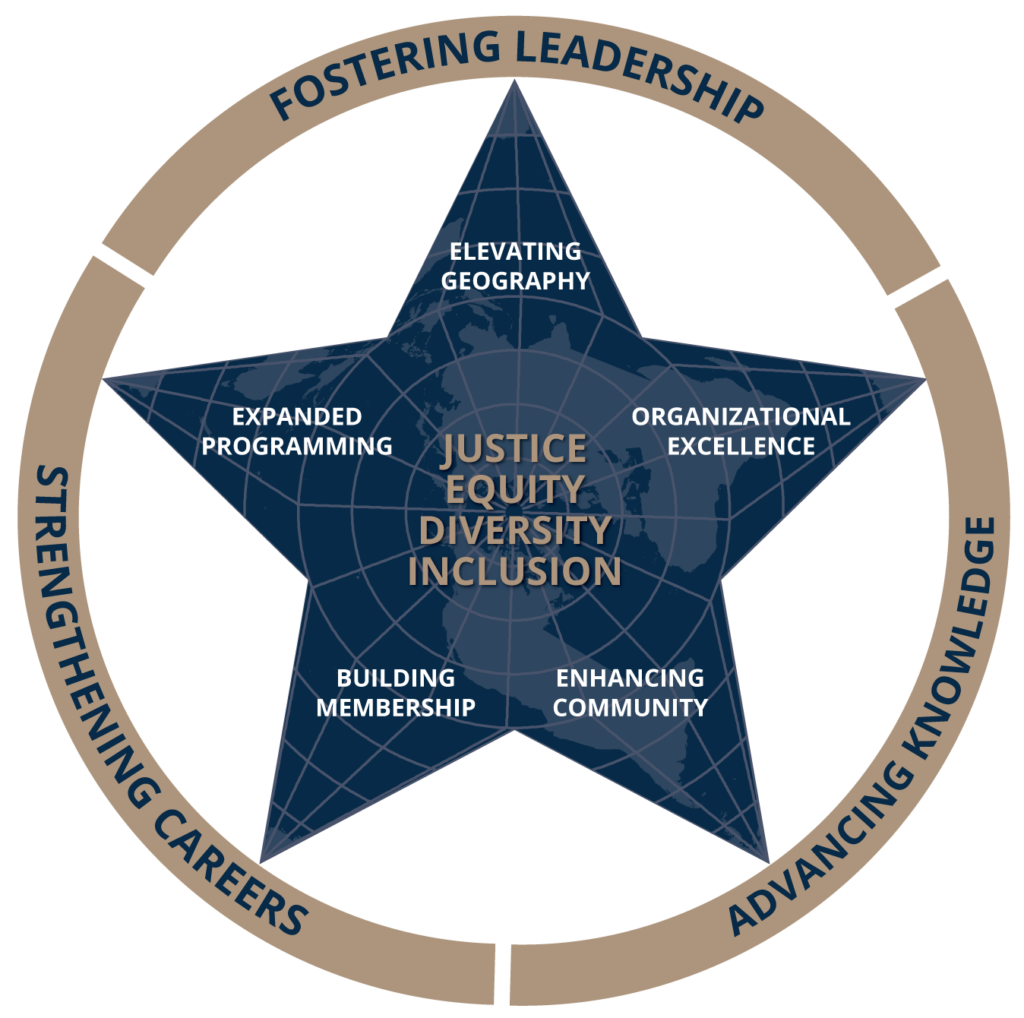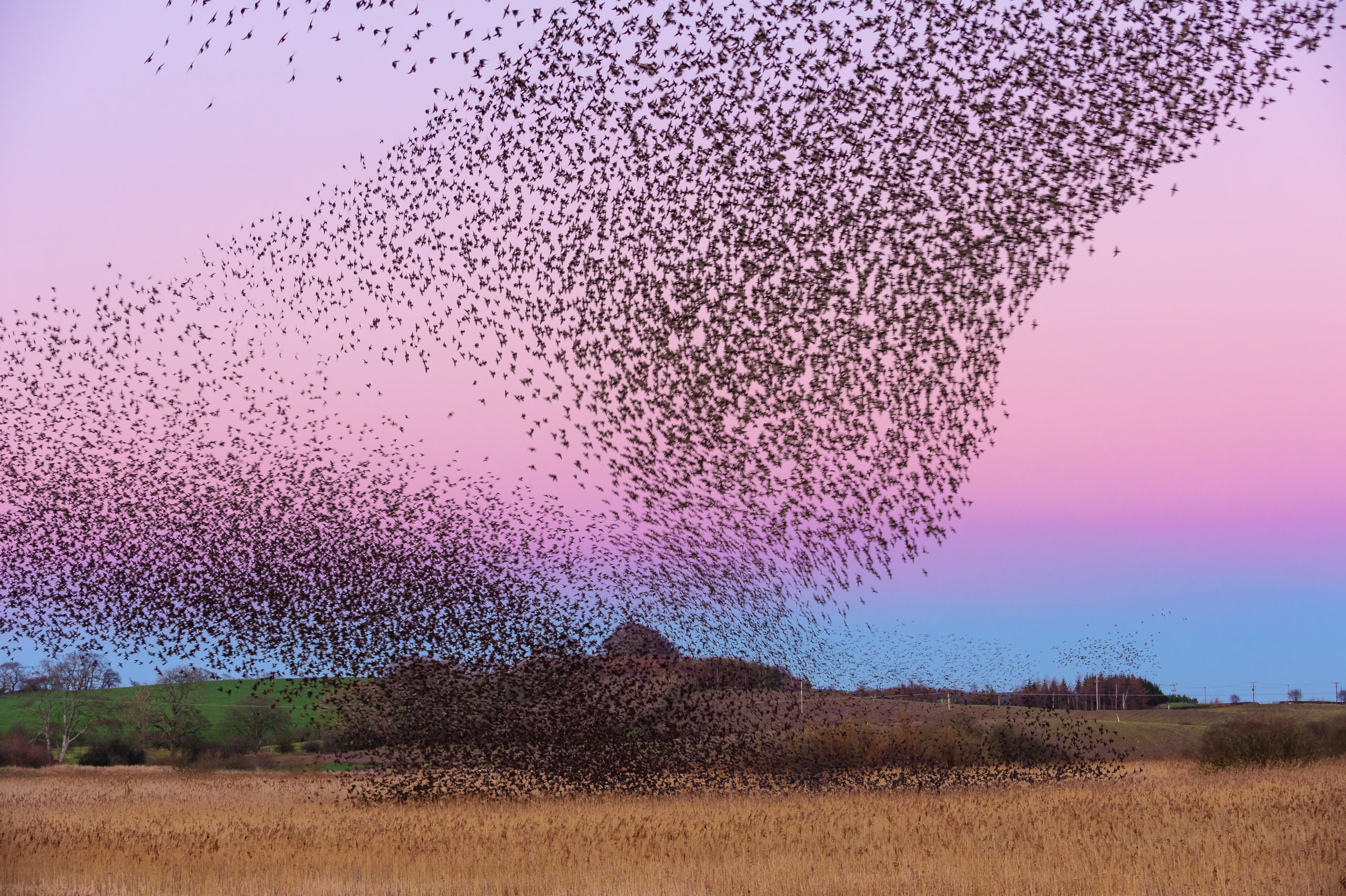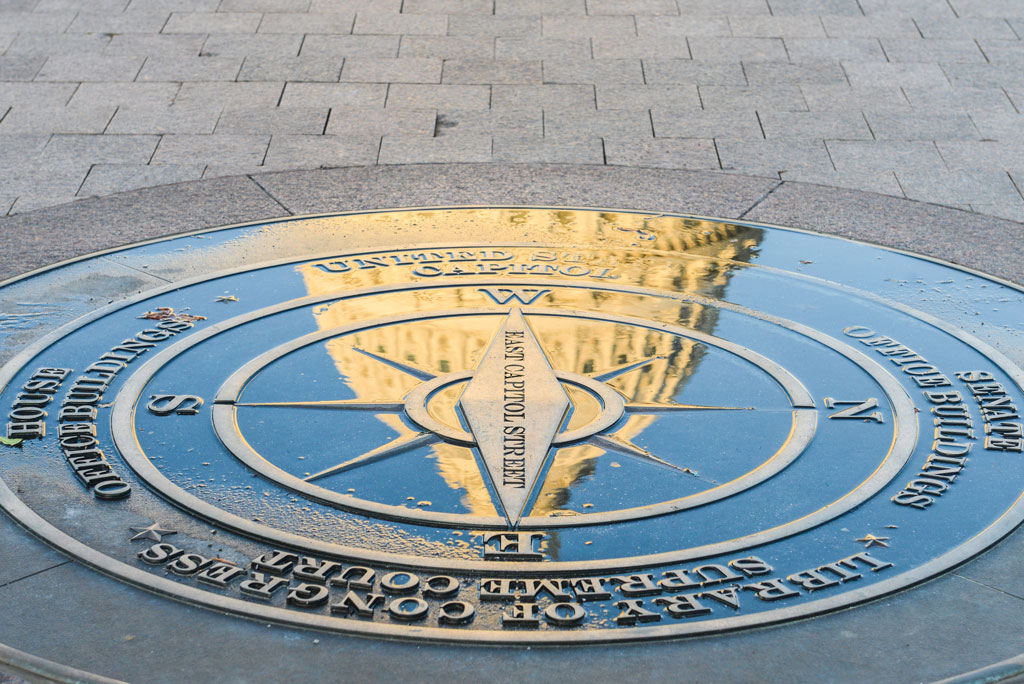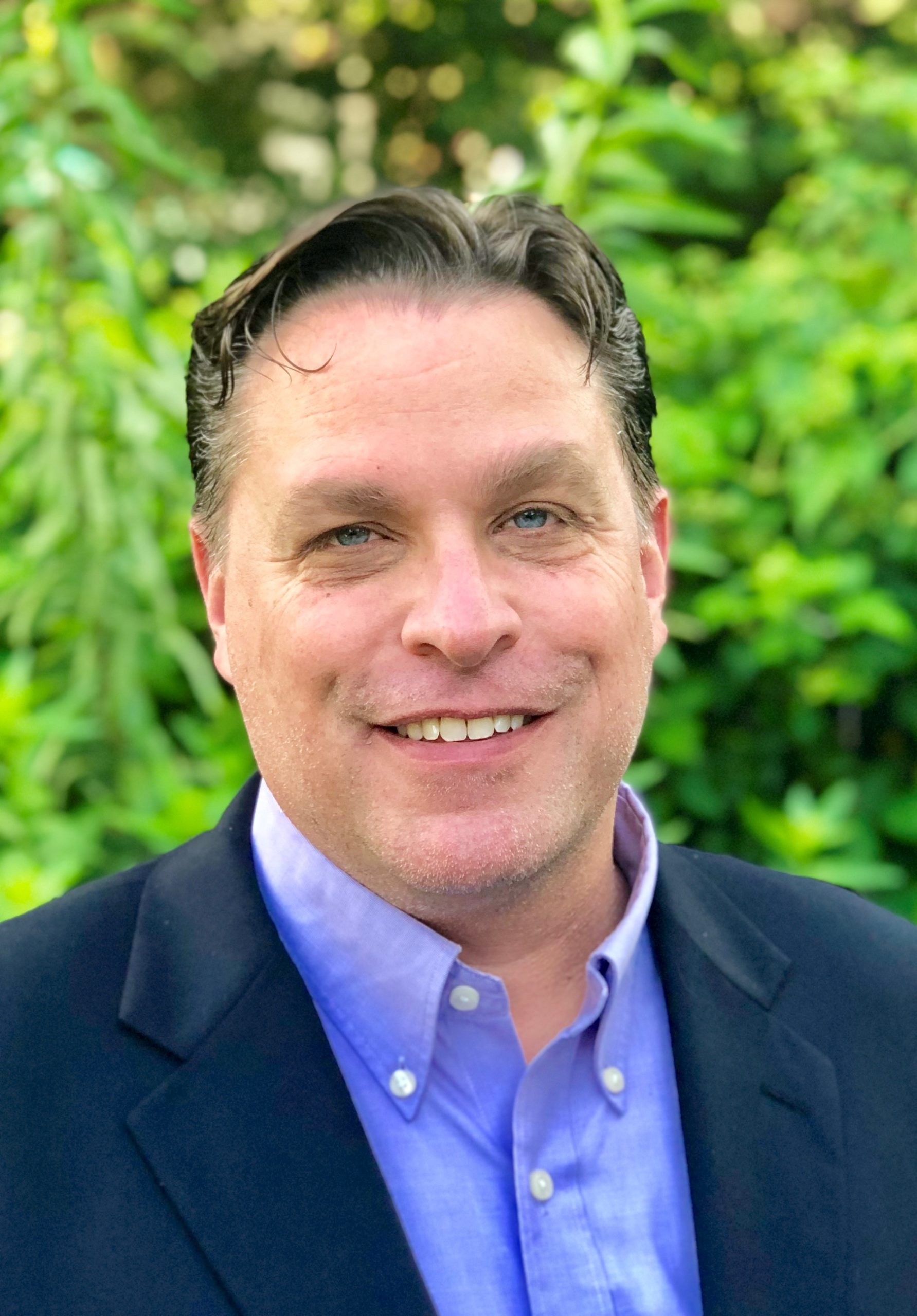Our Mission
The American Association of Geographers (AAG) brings together members of the global geographic community
We provide students, educators, practitioners, and partners with the resources they need to enter the field, develop their careers, and form professional friendships that can last a lifetime. Through annual and ongoing programs, events, and meetings, we aim to create a space in which all geographers—wherever they come from—will know they are valued, heard, and welcomed.
By taking care of our community we ensure the health and vitality of the geographic discipline as it evolves to meet the challenges faced in today’s world.

To improve our world by connecting the people who know it best—the global community of geographers

A world that uses the power of geography to understand its deepest problems…and realize its most daring hopes
Strategic Planning 2023-2025
Goals and efforts for the future
We are preparing for future success by concentrating our commitments of time, energy, and funds to our highest priorities. Over the next three years we will focus on eight areas in of support of our membership and communities who strive to advance the importance of Geography in this changing world. Diversity and inclusion will be the core focus within all of our work to unify our efforts.

Advancing AAG Leadership for JEDI
JEDI is not new to AAG. There have been initiatives, programs, and projects including past strategic plans. What is needed now is a concerted leadership effort to coordinate and integrate all relevant JEDI efforts. By establishing leadership alignment and increasing capacity, we can unify, coordinate, and manage JEDI work across AAG. We will review and refresh AAG policies and leadership practices to reflect JEDI principles. We will also regularly collect and analyze JEDI-specific data to help AAG gauge progress.
Dedicating leadership resources
Enhancing AAG policies and practices
Enabling data-driven D&I excellence
Integrating JEDI into Programming
The AAG has a responsibility to spearhead efforts that make the discipline more diverse in its composition, equitable in its practices, and inclusive in its culture. Work must be done simultaneously on three distinct levels. First, within the AAG, embedding JEDI principles comprehensively across programs and specialty areas is needed to foster a more open, inclusive community for current and prospective members. Second, recognizing that diversity, equity, and inclusion are hallmarks of a healthy department, the AAG should aid departments in their efforts to embody JEDI principles. Third, the AAG should create new pathways for engagement with community college educators, K-12 teachers, and their students to cultivate a robust and diverse cadre of emerging geographers.
Embedding JEDI in AAG programming
Fostering healthy departments
Growing geography’s next generation
Establishing AAG Organizational Tools to Support JEDI
To ensure effective adoption of JEDI principles and practices, we seek to design and operationalize tools that can support AAG leaders, staff, members, and departments. Development and implementation of an effective communication strategy could help grow and sustain JEDI in AAG. Such a strategy, utilizing multiple channels and modes of engagement, would also increase transparency. Additionally, the creation and maintenance of a comprehensive repository of resources, research, and best practices would enable sharing of JEDI knowledge and foster continual dialogue through training and interactive engagement.
Engaging through communication
Curating JEDI knowledge
Elevate the Discipline
AAG is committed to a new initiative that will help geographers elevate the profile of their work and show how essential geography is to understanding and solving the world’s most pressing issues. A tiered program will be launched to train geographers in leadership, media, and policy, and then connect and elevate their work in the public discourse (media + policy). Climate Change and Society will be the theme of the inaugural grand challenge with a three-year commitment. Climate change and society covers the broad spectrum of research and impacts from a changing climate. For example, research on patterns of energy, water, and food scarcity as well as social and environmental impact and justice around the world. Additional themes and cohorts will be added as funding allows.
Three-tiered Program
Cohorts
Recruit, train and support geographers working on climate change and society
Programs
Offer virtual seminars to train members in media, policy and diplomacy skills
Resources
Hub with materials which detail methods and training
Programming
AAG will improve our Annual Meeting, virtual offerings, and other programmatic member services to ensure measurable impact for our core and growing membership groups. We will reimagine and implement the next generation of the AAG Annual Meeting, leveraging diverse personalized content and multiple modes of member engagement to deliver a meaningful and valuable member experience. We will create experimental structures that provide the best possible experience for all attendees regardless of modality of attendance. Beyond the annual meeting, AAG will create and implement a cohesive strategy for year-round offerings, articulating the desired audiences, impacts, and success measures forvirtual sessions, in-person meetings, and other events or programs. AAG will refine this strategy on the basis ofs member feedback and community engagement (Specialty Groups, Affinity Groups, Regions, etc.).
Transform the Annual Meeting
Provide personalized membership experience
Maximize members-only content
Leverage and build on collaborations
Membership
AAG will grow our membership across key member groups, including community college faculty and students, physical geographers, and geographers working outside of academia. This work includes member research, improvements to member dashboards, and streamlined join and renew processes. In addition, AAG will examine member fee structures to determine if they meet the needs of current and prospective members.
Community
AAG will enhance our engagement and outreach services to strengthen and grow communities. We will serve as a hub for established groups, such as Specialty Groups, Regional Divisions, and Departments, and emerging communities across the field.
Organizational Excellence
To carry out our ambitious planning, we will make sure to optimize the operational capabilities, efficiency, and performance of our support systems — HR, IT, finance, and governance — by fine-tuning our systems, processes, data management, and technology. We will invest in organizational effectiveness and staff training. We will also develop an inclusive and thoughtful leadership development strategy for involving members in service to the AAG — e.g., committees, task forces, Specialty and Affinity Groups, Regional Divisions, Council — creating a pipeline of engaged leaders in the discipline.
WHAT WE OFFER
A community with resources and connections at its fingertips
An AAG membership is your link to the foremost networking events, publications, and career-development resources in the field of geography. Memberships allow students, educators, and practitioners of geography to:
SEEK
Apply for exclusive grants to support research, fieldwork, and teaching.
CONNECT
Join active Specialty and Affinity Groups dedicated to particular branches of geography, where colleagues can network and stay on top of the latest research.
GROW
Take part in AAG’s public policy outreach efforts, advocacy work, and diversity, equity, and inclusion initiatives.

WHY IT MATTERS
Geography is more than measuring the length of rivers and the height of mountains
It is the study of the complex, unfolding relationships between people and the land they live on. With background knowledge grounded in the sciences, ethics, history, and the humanities, geographers go beyond mere cataloging and seek to understand the places and spaces we inhabit–in order to make them more just and equitable.
We are here to serve the global geographic community. That is why we support the advocacy efforts of geographers everywhere, as they use their knowledge to make our world a better place to live.
ADVOCACY AND POLICY
HOW YOU CAN HELP
By supporting AAG, you can help us make and sustain the connections that keep geography active, relevant, and engaged…
…and help yourself by developing a deeper relationship to the field. Sharing our information with friends and colleagues, making a one-time or recurring donation, or taking advantage of our many sponsorship opportunities are all ways to make a difference to our work and on behalf of the discipline and geographers.
LEADERSHIP
A note from our executive director
The American Association of Geographers (AAG) is uniquely positioned to represent the discipline and profession of geography. For more than 100 years, AAG has served academic and professional geographers and provided a crucial connection point among academia, government, and business. In an era of climate change, rising nationalism and social inequity, geography is more important than ever before. Yet, our profession is at risk from many directions: from challenges to its relevance within universities, professional challenges from other disciplines in business and government, and lack of diversity and inclusion, among other issues. At the threshold of these challenges, AAG foresees emerging opportunities to elevate its role, effectiveness, and efficiency in serving and supporting its members.
AAG foresees emerging opportunities to elevate its role and effectiveness in serving and supporting its members.
This strategic plan, approved by the AAG Council on April 7, 2020, was developed to advance the objectives of the long-range plan (2015 – 2025), by identifying the most urgent and achievable strategic priorities for AAG during the next three years. This strategic plan translates key elements of the long-term plan into three strategic core areas — geography as a discipline, world-class membership services, and strengthening AAG as a society — each with specific programs to inform tactical actions that can achieve measurable results.
AAG Staff
-
Jennifer Cassidento
Jennifer Cassidento:
Publications Director
-
Coline Dony
Coline Dony:
Director of Research Development
-
Emily Frisan
Emily Frisan:
Digital Marketing Coordinator
-
Jenni Jones
Jenni Jones:
Membership Services Coordinator
-
Gary Langham
Gary Langham:
Executive Director
-
Eddie McInerney
Eddie McInerney:
Community Impact Coordinator
-
Betsy Orgodol
Betsy Orgodol:
Controller
-
Becky Pendergast
Becky Pendergast:
Director of Design and Digital Platforms
-
Risha RaQuelle
Risha RaQuelle:
Chief Strategy Officer
-
Mark Revell
Mark Revell:
Manager, Career Programs and Disciplinary Research
-
Lisa Schamess
Lisa Schamess:
Director of Communications
-
Elin Thorlund
Elin Thorlund:
Chief Operating Officer
-
Ashley Wallace
Ashley Wallace:
Awards and Governance Manager
Opportunities at AAG
Internships
We are offering two paid Internship positions for interested applicants, who will support staff to ensure that the AAG is able to meet organizational strategic goals aligned with elevating the discipline, and providing world-class membership services and programming. Over the course of their internships, they will be partnered with staff members to work on ongoing projects, acting as a partner in creation of ideas and content. Interns will work remotely (or in person, depending on proximity and availability) for around 10 hours per week to support administrative, technological, and outreach tasks related to advancing the AAG’s strategic goals and objectives. Interns will receive a monthly stipend of $700 dollars
For more details about the positions, please apply at the links provided below, and reach out with any questions to our internship program manager via email.
Will assist in developing and implementing communication strategies to promote geographic and scientific literacy. This is an excellent opportunity for students to gain hands-on experience in science communication, public engagement, and outreach.
Learn more and apply now!Will conduct primary information gathering to support the buildout of the AAG’s Geography Guide and work with the Advocacy team to research critical issues such as academic freedom, and changing place names.
Learn more and apply now!
HOW WE OPERATE
The American Association of Geographers is governed by the AAG Council
An elected body composed of more than 300 volunteer members. Click below to find out more about our governance structure, and read the AAG Constitution.
GovernanceWHAT WE’RE UP TO
Surfacing issues within the AAG community is one of the most meaningful things that we do—and we’re glad to share our important work with you

AAG Action on Climate Change
AAG supports our members’ work on climate change in all facets: through research, applied science, and teaching the next generation.

Justice, Equity, Diversity and Inclusion
AAG is open, welcoming and encouraging of differences in perspectives across the broad spectrum of backgrounds or origins within our membership.

Geography and Ethics
The AAG has been engaged in discussions and initiatives on ethical issues in scholarly research and professional practice, which often take geographers into an interdisciplinary arena.




